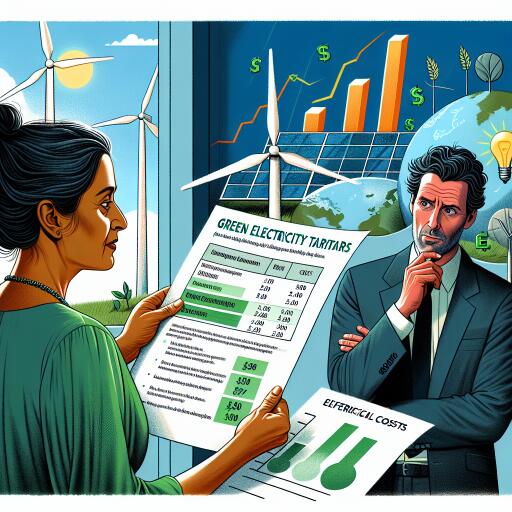
Green Electricity Tariffs: Pricing and Other Challenges
The movement towards green electricity tariffs is gaining momentum, designed to provide consumers with clean energy alternatives. However, this shift brings a suite of challenges, particularly for distribution companies that must adapt to the dynamic energy landscape.
One major operational challenge lies in the distribution companies’ (discoms) ability to supply the requisite incremental green power. This includes difficulties in aligning renewable energy supply with demand throughout the day, commonly resulting in a mere reallocation of already procured renewable energy, rather than an increase.
In our study, we delved into the cost and retail pricing structures of green tariffs among twenty-three distribution companies across 11 states, covering a significant portion of India’s electricity distribution. This analysis includes the fixed and variable costs associated with the generation, transmission, and distribution of electricity. Additionally, pricing distortions such as cross-subsidies, wherein commercial and industrial consumers typically pay more than the average cost of supply, were examined.
Current electricity retail pricing norms and proposed green tariffs differ primarily in cost components. Traditional norms begin with the average power procurement cost (APPC) and incorporate utility distribution costs and cross-subsidies. Meanwhile, the proposed green tariff strictly relies on renewable energy procurement costs, setting caps on both distribution expenses and cross-subsidies.
Our analysis found that the average cost of supply for the 11 major states stands at ₹7.47/kWh, whereas the green tariff calculates to a lower ₹6.50/kWh, highlighting a 15% reduction and implies a potential for financial losses.
If state electricity regulatory commissions approve these green tariffs, a significant shift of high-paying utility consumers could cause a shortfall in cost recovery avenues. This could subsequently threaten distribution company revenues or result in increased prices for other consumer segments.
While current governmental orders and notifications aim to promote green energy access and tariffs, they overlook pressing issues that affect current distribution company operations and may inadvertently impact the renewable energy sector.
For green tariffs to effectively increase renewable energy consumption, they must simultaneously benefit both consumers and distribution companies. A strategic approach to this includes ensuring the financial health of distribution companies, which is vital for the long-term sustainability of renewable energy scaling efforts.
With ambitious goals to achieve 500 GW of non-fossil capacity by 2030, it is critical to invest in technology that supports variable renewable energy, which is expected to lead this growth. Although rooftop solar and similar behind-the-meter renewable options are expanding, distribution companies continue to represent the backbone of renewable energy procurement. Maintaining their financial and operational stability is thus essential.
Moving forward, it is crucial to create a framework that addresses these challenges, promoting a harmonious balance between consumer needs and distribution company sustainability, ensuring the successful expansion of green energy initiatives. By refining the design and features of green tariffs, we can set the foundation for a resilient green energy market that supports both environmental goals and economic stability.





Leave a Reply